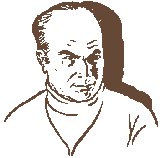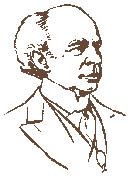
|
|
|
Dr. Norman Bethune (1890-1939), a Canadian doctor who became famous for taking his medicine out to the battlefields of China and Spain, also suffered from tuberculosis throughout his spectacular career. Bethune was born in Gravenhurst, Ontario, where Canada's first TB sanatorium was erected when he was seven years old. Before he finished medical school, World War I broke out in 1914, and Bethune enlisted immediately as a stretcher bearer--only the tenth person in the city of Toronto to enlist in the army. Before finishing his medical residency, however, Dr. Bethune was diagnosed tuberculous, and had to take time out from his career to recover, first in the San at Calydor--near Gravenhurst and then Saranac Lake in New York. While at Saranac Lake San, Dr. Bethune became interested in the Pneumothorax treatment, which had not yet become standard in Canada, and he requested to have the treatment performed on himself. After a quick recovery, he vowed to promote the treatment widely in Canada, but not before adding his own modification to the procedure--development of an instrument that still bears his name. Upon his return to his home country, Dr. Bethune collaborated with Dr. Archibald to perform many surgeries on TB patients. Soon after, Bethune left Canada again for Spain, to help in the Civil war there. While on the battlefield, Dr. Bethune introduced the concept of a mobile blood supply, for which he is best remembered. Bethune died in China, where he had volunteered for the army in defense against Japanese invasion.
Other "Famous TB’s", were such well known persons as: John Keats, Percy Shelley, Friedrich Von Schiller, Elizabeth Browning, Henry D. Thoreau, the Brontë sisters, Frederic Chopin, Honoré de Balzac, Alfred de Musset, Robert Louis Stevenson, Cecil Rhodes, Nicolo Paganini, Ralph Waldo Emerson, Tolstoy, Stalin, Harold Stassen, Edouard Herriot, Pope Pius XII, Rossetti, Casanova, Somerset Maugham, Noel Coward, Al Jolson, Anna Pavlova, Mozart, Grieg, Alexander Graham Bell, Mme. Curie, Debussy, H. G. Wells, Dr. Paul Ehrlich, Paul Dunbar, Henry Morgenthau, Jr., Ring Lardner, Charles Wakefield Cadman, Ralph Waldo Emerson, Jay Gould, John N. Garner, Heinrieh Heine, Simon Bolivar, Mohandas K. Ghandi, Anton Checkhov, Napoleon, Eugene O’Neill, U. S. Grant, Maxim Gorky, Roger W. Babson, Dostoievsky, Andrew Jackson, Von Weber, Moliere, Washington Irving, Artemus Ward, and Adolph Hitler.
|



